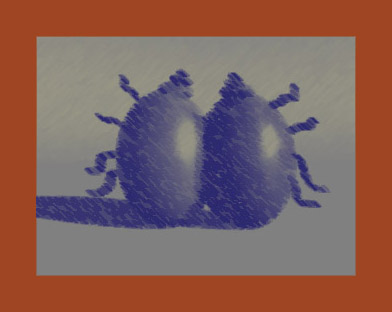
Lyme disease, the tick bite transmitted bacterial infection was initially identified in 1975, subsequent to the research work undertaken by scientists to delve into the reasons behind the unnaturally huge populace of infants being detected with juvenile rheumatoid arthritis in areas like Lyme, Conn and duo adjacent settlements.
The examiners found that a major population of children that were affected resided in the close by forested locales where ticks were believed to thrive. The researchers additionally noted that the preliminary lyme disease symptoms classically commenced during the summer season that overlapped with the peak time for the ticks.
Numerous patients cited displaying unusual kinds of rashes on the skin just prior to having symptoms of arthritis, and several patients also remembered having a tick bite at the location of the rash.
Detailed analysis lead to unravelling of the fact that the small deer ticks showed the presence of the twisted shaped bacteria known as spirochete, that soon after was named Borrelia burgdorferi, were the cause for the outburst in Lyme. Regular wood ticks and those ticks found in animals like dogs are known to not transmit the infection.
The usually Borrelia Burgdorferi- infected ticks normally nosh and copulate on the deer during the course of their life span. The latest spurt of the deer populace in the north-eastern regions and constructions of suburban expansions in the rural regions where the deer ticks are generally present, are possibly responsible for the raised numbers of cited Lyme disease cases.
Lyme disease is known to cause cardiovascular, brain and nerve ailments in addition to causing arthritis. The disease is contracted via a bite from a particular tick variety. this tick form is found on the bodies of animal forms like white-footed field mouse, chipmunk, deer, raccoon, opossum, skunk, weasel, fox, shrew, mole, squirrel and horse. a major population of ticks are been noted in countries like New York, New Jersey, Wisconsin, Connecticut and Minnesota.
In the preliminary phases of the Lyme disease, the person affected would exhibit flu-similar lyme disease symptoms which could comprise of a stiffness noted in the neck, feeling chills and feverish, swelling in the lymph nodes, weariness, soreness in the muscles, joint aches and headaches.
One might even notice an outsized, intensifying rash on the skin encircling the region of the tick bite. Pains experienced in the joints and muscles are the other initial lyme disease symptoms. in later stages of the disease, knee arthritis and nerve problems surface.